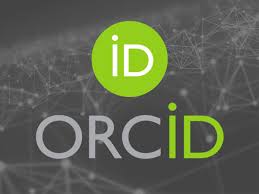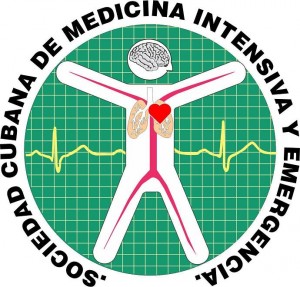Severe acute thrombocytopenia associated with the use of intravenous tirofiban, after percutaneous coronary intervention
Keywords:
angioplasty, critical care, coronary heart disease, tirofiban, thrombocytopeniaAbstract
Introduction: Glycoprotein IIb/IIIa inhibitors are potent drugs in inhibiting platelet aggregation and are used in settings of acute or chronic coronary syndrome led topercutaneouscoronaryinterventionorwithevidenceofthromboticcomplicationor non-reflux phenomenon. However, these drugs are associated with thrombocytopenia and with the use of tirofiban it occurs in 0.4 to 5.6% of cases.
Objective: To present a case of severe acute thrombocytopenia after the infusion of tirofiban and to discuss the pathophysiology, approach and treatment of this disease.
Clinical case: 61-year-old male patient, with a pathological history of controlled hypertension, with a clinical picture of typical recurrent angina pain with myocardial perfusion study with positive exercise stress for induction of anterior wall ischemia. A coronary arteriography was performed, which reported multivessel disease, angioplasty and a medicated stent implantation were performed, and bolus tirofiban and subsequent infusion were indicated. He developed acute severe thrombocytopenia at 24 hours, a platelet unit was indicated by apheresis with good transfusion performance, and it was decided to suspend tirofiban, with resolution of the thrombocytopenia and there was no bleeding complication.
Conclusion: Acute severe thrombocytopenia induced by glycoprotein IIb/ IIIa inhibitors is a rare adverse effect, which can be detected in a timely manner by monitoring the platelet count. To ensure the safe use of these drugs in acute coronary syndrome or percutaneous coronary intervention scenarios.
Downloads
References
1. Ibanez B, James S, Agewall S, Antunes MJ, Bucciarelli-Ducci C, Bueno H, et al. 2017 ESC Guidelines for the management of acute myocardial infarction in patients presenting with ST-segment elevation: The Task Force for the management of acute myocardial infarction in patients presenting with ST-segment elevation of the European Society of Cardiology (ESC). Eur Heart J 2018;39(2):119-177. DOI: 10.1093/eurheartj/ehx393.
2. Collet J-P, Thiele H, Barbato E, Barthélémy O, Bauersachs J, Bhatt DL, et al. 2020 ESC Guidelines for the management of acute coronary syndromes in patients presenting without persistent ST-segment elevation: the Task Force for the management of acute coronary syndromes in patients presenting without persistent ST-segment elevation of the European Society of Cardiology (ESC). Eur Heart J. 2021;42(14):1289-1367. DOI: 10.1093/eurheartj/ehaa575.
3. Aster R, Curtis B, Bougie D, Dunkley S, Greinacher A, Warkentin T, et al. Thrombocytopenia associated with the use of GPIIb/IIIa inhibitors: position paper of the ISTH working group on thrombocytopenia and GPIIb/IIIa inhibitors. J Thromb Haemost. 2006 ;4(3):678-9. DOI: 10.1111/j.1538-7836.2006.01829.x.
4. Yi Y-H, Yin W-J, Gu Z-C, Fang W-J, Li D-Y, Hu C, et al. A Simple Clinical Pre -procedure Risk Model for Predicting Thrombocytopenia Associated With Periprocedural Use of Tirofiban in Patients Undergoing Percutaneous Coronary Intervention. Front Pharmacol. 2018;9:1456. DOI: 10.3389/fphar.2018.01456.
5. Patrono C, Bachmann F, Baigent C, Bode C, De Caterina R, Charbonnier B, et al. Expert consensus document on the use of antiplatelet agents: The Task Force on the Use of Antiplatelet Agents in Patients With Atherosclerotic Cardiovascular Disease of the European Society of Cardiology. European Heart Journal, 2004;25(2):166-81. DOI: 10.1016/j.ehj.2003.10.013
6. Yurtdaş M, Yaylali YT, Aladağ N, Özdemir M, Atay MHJCrim. Acute serious thrombocytopenia associated with intracoronary tirofiban use for primary angioplasty. Case Rep Med. 2014;2014:190149. DOI: 10.1155/2014/190149.
7. Kalra K, Franzese CJ, Gesheff MG, Lev EI, Pandya S, Bliden KP, et al.
Pharmacology of antiplatelet agents. Curr Atheroscler Rep. 2013;15(12):371. DOOI: 10.1007/s11883-013-0371-3.
8. Arnold DM, Nazi I, Warkentin TE, Smith JW, Toltl LJ, George JN, et al. Approach to the diagnosis and management of drug-induced immune thrombocytopenia. Transfus Med Rev. 2013;27(3):137-45. DOI: 10.1016/j.tmrv.2013.05.005.
9. Knight DJ, Selwyn D, Girling K, Lakshmanan S, Saha B, Rittoo D, et al. HIT/HITT and alternative anticoagulation: current concepts. Br J Anaesth. 2003;91(3):445; author reply 445-6. PMID: 12925492.
10. Lilly LS, Braunwald E. Braunwald's heart disease: preventive cardiology; atherosclerotic cardiovascular disease: Elsevier Health Sciences; Philadelphia, 2012;43-64
11. Abdeladim S, Elharras M, Elouarradi A, Bensahi I, Oualim S, Merzouk F, et al. Thrombocytopenia induced by glycoprotein (GP) IIb-IIIa antagonists: about two cases. Pan Afr Med J. 2021;38:9. DOI: 10.11604/pamj.2021.38.9.27215.
12. Meghrajani V, Sabharwal N, Namana V, Elsheshtawy M, Topi BJCrih. A Case of Hyperacute Severe Thrombocytopenia Occurring Less than 24 Hours after Intravenous Tirofiban Infusion. Case Rep Hematol. 2018;2018:4357981. DOI: 10.1155/2018/4357981.
13. Rauova L, Poncz M, McKenzie SE, Reilly MP, Arepally G, Weisel JW, et al. Ultralarge complexes of PF4 and heparin are central to the pathogenesis of heparin-induced thrombocytopenia. Blood. 2005;105(1):131-8. DOI: 10.1182/blood-2004-04-1544.
14. Badimon L, Vilahur GJRedcs. Mecanismos de acción de los diferentes agentes antiplaquetarios. Revista Española de Cardiología Suplementos,2013;13(2):8-15 DOI: 10.1016/S1131-3587(13)70074-8.
15. Liu YY, Dong QT, Guo YL, Wu NQ, Li JJ. Tirofiban-Induced Severe Thrombocytopenia. Am J Ther. 2019;26(5):e659-e661. DOI 10.1097/MJT.0000000000000861.
16. Wang S, Sawalha K, Khan A. An Unusual Case of Drug-Induced Thrombocytopenia. J Investig Med High Impact Case Rep. 2020;8:2324709620947891. DOI 10.1177/2324709620947891.
17. Rawala MS, Ahmed AS, Posina K, Sundaram V. Tirofiban Induced Thrombocytopenia: A Rare but Severe Adverse Effect. J Community Hosp Intern Med Perspect. 2020;10(2):171-173. DOI: 10.1080/20009666.2020.1747783.






